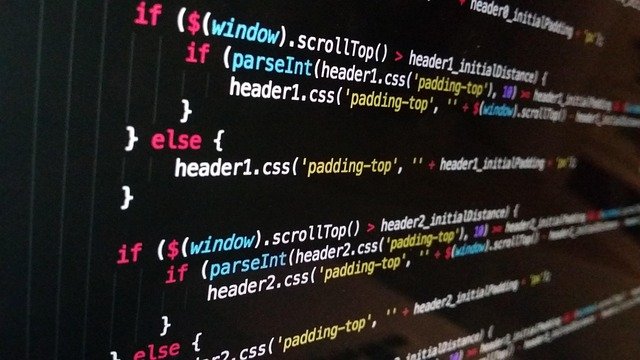Full-Stack Development Programs: What They Can Include
Full-stack development programs offer comprehensive training in both front-end and back-end technologies, preparing students for versatile roles in web development. These educational pathways typically combine multiple programming languages, frameworks, and tools to create well-rounded developers capable of building complete web applications from start to finish.

What Coding Languages Do Programs Typically Cover
Most full-stack development programs begin with fundamental coding languages that form the backbone of web development. JavaScript remains essential for both client-side and server-side programming, while HTML and CSS provide the structural foundation for web interfaces. Python has gained significant popularity due to its versatility and readability, making it an excellent choice for beginners and experienced developers alike.
Many programs also incorporate Java, which offers robust enterprise-level capabilities, and SQL for database management. Some curricula include newer languages like TypeScript, which adds static typing to JavaScript, or Go and Rust for specialized backend applications. The selection often depends on current industry demands and the program’s specific focus areas.
How Full-Stack Development Programs Structure Learning
Full-stack development programs typically follow a progressive learning structure that builds complexity over time. Most begin with frontend technologies, teaching students to create user interfaces and interactive experiences. This foundation includes responsive design principles, user experience considerations, and modern JavaScript frameworks like React, Angular, or Vue.js.
The curriculum then transitions to backend development, covering server-side programming, API creation, and database integration. Students learn to work with various database systems, both relational and NoSQL, understanding when to apply each type. Version control systems like Git become integral tools, along with deployment strategies and cloud platforms.
Project-based learning forms a crucial component, where students apply their knowledge to real-world scenarios. These projects often simulate professional development environments, incorporating agile methodologies and collaborative workflows that mirror industry practices.
What Skills Development Areas Programs Address
Beyond technical programming abilities, full-stack development programs emphasize critical thinking and problem-solving skills. Students learn to debug complex applications, optimize performance, and implement security measures throughout the development stack. Communication skills receive attention as developers must collaborate with designers, project managers, and stakeholders.
Modern programs increasingly include DevOps practices, teaching students about continuous integration, automated testing, and deployment pipelines. Understanding cloud services, containerization with Docker, and orchestration tools has become standard in many curricula. Quality assurance practices, including unit testing and integration testing, prepare students for professional development environments.
How Programs Support Digital Career Transitions
Full-stack development programs recognize that many students come from non-technical backgrounds seeking digital career opportunities. Career support often includes portfolio development guidance, helping students showcase their projects effectively to potential employers. Mock interviews, resume workshops, and networking opportunities connect students with industry professionals.
Many programs maintain relationships with hiring partners, facilitating internships and entry-level positions. Career services may extend beyond graduation, providing ongoing support as graduates advance in their careers. Some programs offer specialized tracks for different career paths, such as startup environments, enterprise development, or freelance consulting.
Web Development Specializations Within Programs
While full-stack programs provide broad coverage, many offer specialization tracks that allow students to focus on specific areas of web development. E-commerce development tracks might emphasize payment processing, inventory management, and customer relationship systems. Mobile-responsive development focuses on progressive web applications and mobile-first design principles.
Some programs offer concentrations in emerging technologies like artificial intelligence integration, blockchain development, or Internet of Things applications. Enterprise development tracks prepare students for large-scale corporate environments, emphasizing scalability, security protocols, and complex system integration.
Program Formats and Investment Considerations
Full-stack development programs are available in various formats to accommodate different schedules and learning preferences. Traditional university degree programs typically span two to four years, while intensive bootcamps compress the curriculum into three to six months of full-time study. Part-time options allow working professionals to transition gradually into web development careers.
| Program Type | Duration | Cost Range | Format Options |
|---|---|---|---|
| University Degree | 2-4 years | $20,000-$80,000 | On-campus, Online |
| Coding Bootcamp | 3-9 months | $8,000-$20,000 | Full-time, Part-time |
| Online Self-Paced | 6-18 months | $500-$5,000 | Flexible Schedule |
| Corporate Training | 3-12 months | $3,000-$15,000 | On-site, Remote |
Prices, rates, or cost estimates mentioned in this article are based on the latest available information but may change over time. Independent research is advised before making financial decisions.
The investment in full-stack development education varies significantly based on program intensity, institution reputation, and included services. Bootcamps often provide job placement assistance and career coaching as part of their higher fees, while online platforms may offer more affordable options with less personalized support.
Full-stack development programs continue evolving to meet industry demands, incorporating new technologies and methodologies as they emerge. The comprehensive nature of these programs positions graduates for diverse opportunities in the expanding web development field, from startup environments to established enterprises seeking digital transformation expertise.




